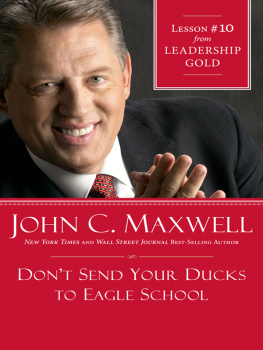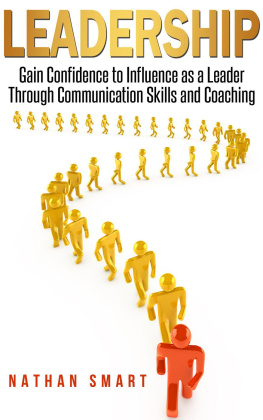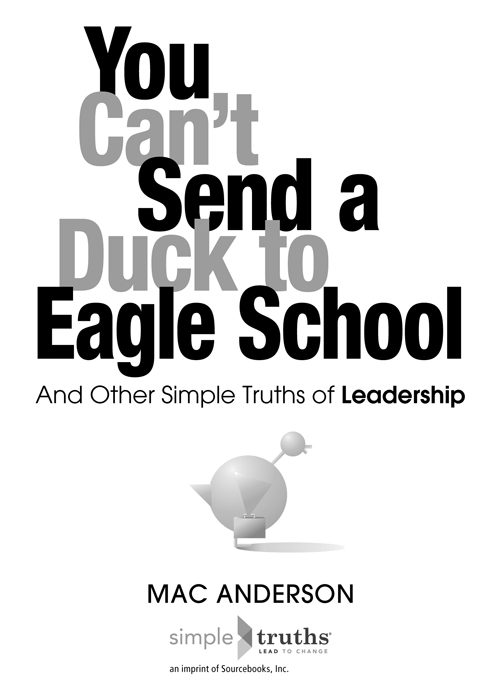Copyright 2006 by Mac Anderson
Cover and internal design 2015 by Sourcebooks, Inc.
Sourcebooks, the colophon, and Simple Truths are registered trademarks of Sourcebooks, Inc.
All rights reserved. No part of this book may be reproduced in any form or by any electronic or mechanical means including information storage and retrieval systemsexcept in the case of brief quotations embodied in critical articles or reviewswithout permission in writing from its publisher, Sourcebooks, Inc.
This publication is designed to provide accurate and authoritative information in regard to the subject matter covered. It is sold with the understanding that the publisher is not engaged in rendering legal, accounting, or other professional service. If legal advice or other expert assistance is required, the services of a competent professional person should be sought. From a Declaration of Principles Jointly Adopted by a Committee of the American Bar Association and a Committee of Publishers and Associations
All brand names and product names used in this book are trademarks, registered trademarks, or trade names of their respective holders. Sourcebooks, Inc., is not associated with any product or vendor in this book.
Photo Credits
Cover and internals Scott Anderson; VectorState
Published by Simple Truths, an imprint of Sourcebooks, Inc.
P.O. Box 4410, Naperville, Illinois 60567-4410
(630) 961-3900
Fax: (630) 961-2168
www.sourcebooks.com
Originally published in 2006 in the United States of America by Simple Truths.
Contents
Introduction
I once had lunch with a top executive from a company known for their legendary retail service. My wife and I are both huge fans, and over lunch I shared with him some of the great service stories his people had provided the Anderson family. I said, With the service your people give, you must have a training manual two inches thick.
He looked up and said, Mac, we dont have a training manual. What we do is find the best people we can find, and we empower them to do whatever it takes to satisfy the customer. Then he said something Ill never forget: We learned a long time ago that you cant send a duck to eagle school.
Excuse me? I asked.
He repeated, You cant send a duck to eagle school. He said, You cant teach someone to smile; you cant teach someone to want to serve; you cant teach personality. What we can do, however, is hire people who have those qualities, and we can then teach them about our products and teach them our culture.
As long as I live, I will never forget this simple analogy about hiring people.
It is branded on my brain forever. And since that day, with every hiring decision Ive made, I find myself asking this question: Am I hiring a duck, thinking they will become an eagle? I can honestly say that asking this simple question has saved me from making some important hiring mistakes.
I just wish Id heard it twenty years sooner.
The duck to eagle school lesson is one of many simple truths of leadership that Ive learned on my journey as an entrepreneur. In the past thirty years, Ive had the good fortune to be involved with three successful start-up companies, each becoming a leader in its niche. And, as you can imagine, there have been many peaks, valleys, and lessons learned along the way.
Ive also been very fortunate to have met a lot of people who are a lot smarter than I am. Successful entrepreneurs, authors, speakers, educators, coaches, and CEOs of large companies have all helped shape my thinking. It has been their wisdom and their knowledge, combined with my own life experiences, that have helped shape who I am today.
My goal with this book is to share some of my lessons learned in a brief but engaging way. Because so many times its not what is said but how it is said that turns the switch from off to on. For me, one of the most exciting things about business and life is that one great idea can change our lives forever.
All the best,
Mac Anderson
Founder, Simple Truths and Successories
Leadership Would Be Easy, If It Wasnt for People
There is one question that every employee will love to have you ask: What can I do to help? So many times as leaders, we assume were doing all we can do; however, these six wordsWhat can I do to help?will usually prove your assumptions are dead wrong. The question should address three areas:
What can I do to help you serve the customer better?
What can I do to make your working environment more pleasant?
What can I do to help you better balance your work and family life?
Obviously, its important to let them know up front that you may not be able to help with everything they ask, but youll do what you can. In other words, a chauffeur to and from work is probably out of the question.
Youll usually be amazed to hear about a few small things that will cost you next to nothing. You may find their chair is uncomfortable or they need a new file cabinet, flex hours one day a week, a new headset for the phone, or a small space heater in the winter months. The truth is, the fact that youve taken the time to listen to their personal concerns is far more important in their eyes than what youll do for them. Gallup polled over one million employees who thought they had a great boss and asked them one question: Why? You got it! The number one reason was the boss was willing to listen to what they had to say. Never forget: its the little things, not the big ones, that will earn the respect of your people.
Listening is wanting to hear.
Jim Cathcart
Change Is GoodYou Go First
A while back Tom Feltenstein said, Mac, we should write a book together, and the title could be Change Is GoodYou Go First . I immediately loved the idea, and we added the subtitle 21 Ways to Inspire Change.
Change is the key that unlocks the door to growth and excitement in any organization. The leaders ability to inspire a culture of change can make or break their success. Tomorrow comes at us with lightning speed, and our competitive advantage is a fleeting thing. Bill Gates puts it this way: In three years, every product my company makes will be obsolete. The only question is whether we will make them obsolete or somebody else will. Peter Drucker reinforced what Gates said by saying, Every three years, each product and process should be put on trial for its life; otherwise, the competition will pass you by. Drucker also says that most companies find it easier to come up with new ideas than to let go of old ones.
Have you ever watched a fly bouncing off a window pane, even with an open door a few feet away? Many times the fly keeps crashing into the glass until it finally dies. There are many companies in todays world doing exactly the same thing. They continue down todays path, wearing blinders to the possibility of changeuntil they die.
Keeping change and continuous improvements on the front burner is never easy. We are so focused on todays problems that we put off planning for tomorrows opportunities.
Keeping change alive starts with rewarding innovation, risk taking, and creativity. In fact, you need to fail quickly and fail often to stay ahead of the competition. T. S. Eliot said it best: Only those who will risk going too far can possibly find out how far one can go.









